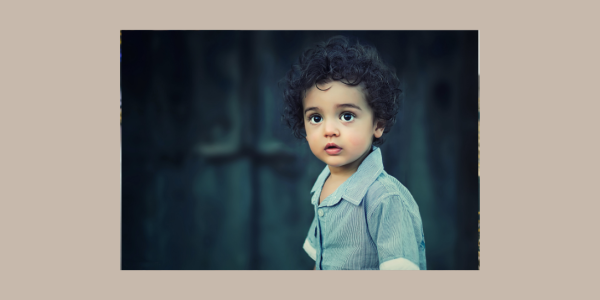Es fácil confundirse entre pesadillas y los terrores nocturnos. Conocer la diferencia entre los dos es la clave para determinar la mejor manera de ayudar a nuestros hijos.
Las pesadillas son muy comunes y totalmente normales. A menudo alcanzan su punto máximo a los dos o tres años, cuando los niños tienen una imaginación rica y tienen problemas para distinguir entre la realidad y la fantasía. Las pesadillas ocurren durante el sueño REM, cerca del final de nuestro período de sueño. Cuando los niños tienen una pesadilla, querrán que los consueles y les hagas saber que todo está bien, te reconocerán al verte. Serán capaces de recordar la pesadilla, o al menos partes de ella. Les podrá llevar un tiempo volverse a dormir y sacar los pensamientos de miedo de sus mentes.
Cómo ayudar a nuestros hijos a evitarlas:
- Evita los videos, libros e historias de miedo antes de acostarse
- No juegues juegos de miedo con ellos antes de dormir
- Responder rápidamente y asegurarles que están seguros
- Ayudar a tu hijo a dormir lo suficiente: la falta de sueño puede aumentar las pesadillas
- Evitar las vitaminas a la hora de acostarse
- Consulta con tu pediatra para asegurarte de que tu hijo no esté tomando ningún medicamento que pueda estar interfiriendo con su sueño nocturno.
Las pesadillas pueden ocurrir durante momentos de estrés o cuando un niño está reviviendo un trauma. Se consciente de eso y obtén ayuda profesional si te preocupan las pesadillas frecuentes, pero recuerda que los niños felices, bien adaptados y con poco estrés también pueden experimentar pesadillas de vez en cuando.
Los terrores nocturnos son diferentes tanto en los síntomas como en la experiencia. Cuando un niño experimenta un terror nocturno, puede gritar y parecer ansioso. Su corazón puede estar acelerado. El niño suele estar inconsolable y es posible que no te reconozca. Incluso puede alejarte y parecer asustado de ti. El terror suele durar entre cinco y quince minutos y luego cede. Estos incidentes suelen ser más molestos para los padres que para el niño, ya que los niños generalmente no los recuerdan. Los terrores nocturnos ocurren durante el sueño NO REM (el período en el que se sale del sueño profundo) y por lo general, después de dos horas de haberse ido a dormir.
Los terrores nocturnos no son malos sueños. NO ocurren durante el sueño.
No son una señal de un problema psicológico.
Los terrores nocturnos también pueden ocurrir durante un pico del desarrollo.
Los terrores nocturnos parecen ser más comunes en los niños que en las niñas, y ocurren en el 5% de todos los niños. Es más probable que tu hijo tenga terrores nocturnos si alguno de los padres los tuvo cuando era niño o si alguno de los padres tuvo un trastorno del sueño de excitación parcial, como el sonambulismo. Hay otras causas de los terrores nocturnos. La causa más común es la falta de sueño o una alteración en los patrones de sueño de un niño. El estrés que es causado por grandes cambios en su patrón de sueño (como viajar a una zona horaria diferente, apnea del sueño o fiebre) también puede ser un factor contribuyente.
Qué puedes hacer:
- Si tu hijo está teniendo un terror nocturno, vigílalo pero evita interferir, ya que esto puede empeorar el episodio.
- Asegurate de que tu hijo esté físicamente seguro durante el terror nocturno
- Acuesta a tu hijo más temprano, aunque solo sea 30 minutos antes
- Mantén un horario de sueño regular
- No hables del terror nocturno con tu hijo por la mañana.
Si tu hijo tiene Terrores Nocturnos dos o tres veces por semana en momentos establecidos durante la noche (es decir, 2 horas después de irse a dormir), has lo siguiente para cambiar su patrón de sueño:
- Mantén un registro de sueño para reconocer el patrón – lo que ayudará a romper el patrón
- Despierta a tu hijo 15 minutos antes de la hora en que suele tener el episodio
- No lo levantes por completo, pero querrás que estén en ese punto de vigilia donde murmuran, se mueven o se dan la vuelta
- Has esto todas las noches durante 7-10 noches seguidas, incluso si pasan algunas noches sin episodios
Dado que estos dos fenómenos difieren tanto, es importante comprender claramente la diferencia entre las pesadillas y los terrores nocturnos. Mantener una presencia mental tranquila y usar una voz tranquilizadora puede marcar una gran diferencia en estos episodios nocturnos tanto para tu como para tu hijo. Recuerda tranquilizar a tu hijo cuando sea necesario, mostrando amor y respeto por estas experiencias normales.
Nightmares and night terrors are confusing. Knowing the difference between the two is the key to determine the best way to handle each episode.
Nightmares are very common and totally normal. They often peak at two or three years of age when children have rich imaginations and have some trouble distinguishing between reality and fantasy. Nightmares occur during REM sleep, near the end of our sleep period. When children have a nightmare, they will seek comfort from their disturbing dream and recognize you upon seeing you. They are able to recall the nightmare or at least portions of it, but it may take a while to fall back asleep and get the scary thoughts out of their minds.
How to help avoid them:
- Avoid scary videos, books, and stories prior to bed
- Don’t play scary games
- Respond quickly and assure them of their safety
- Help your child get enough sleep – sleep deprivation can increase nightmares
- Avoid high-dose vitamins at bedtime
- Check with your paediatrician to make sure your child is not on any medications that might be interfering with their night sleep
Nightmares can occur during times of stress or when a child is reliving a trauma. Be aware of that, and get some professional advice if you are worried about frequent nightmares but remember that happy, well-adjusted, low-stress kids can also experience bad dreams now and then.
Night terrors are different in both the symptoms and the experience. When a child is experiencing a night terror he may scream and appear anxious. His heart may be racing. The child is often inconsolable, and may not recognize you. He may even push you away and seem frightened of you. The terror usually lasts between five and fifteen minutes and then subsides. These incidents are often more upsetting for the parent than they are for the child, as children do not usually remember them. Night terrors occur during NON-REM sleep (the period of coming out of deep sleep), and usually within two hours after the child falls asleep.
Night terrors are not bad dreams. They do NOT occur during dream sleep.
They are not a sign of a psychological problem.
Night terrors can also occur during a developmental milestone.
Night terrors seem to be more common in boys, and occur in 5% of all children. Your child is more likely to have night terrors if either parent had them as a child, or if either parent had a partial arousal sleep disorder such as sleepwalking.
There are other causes for night terrors. The most common cause is sleep deprivation or a disturbance in a child’s sleep patterns. Stress that causes big changes in their sleep schedule (like travelling to a different time zone, sleep apnea, or fever) can also be contributing factors.
What you can do:
- If your child is having a night terror, monitor the child but avoid interfering, as this can worsen the episode
- Make sure your child is physically safe during the night terror
- Put your child to bed earlier – even if by only 30 minutes
- Keep a regular sleep schedule for him
- Don’t talk about the terror with your child in the morning
If your child is having a sleep terror two to three times a week at set times during the night (i.e. 2 hours after going to sleep) do the following to change his sleep pattern:
- Keep a sleep log to recognize the pattern– that helps break the pattern
- Wake your child 15 minutes prior to the time he usually has an episode
- Don’t get them up completely but you want them to be at that point of awakeness where they mumble, move, or rollover
- Do this every night for 7-10 nights in a row even if they go a few nights without a terror
As these two phenomenons differ so greatly it is important to clearly understand the difference between nightmares and night terrors. Keeping a calm presence of mind and using a reassuring voice can make a huge difference in these middle-of-the-night episodes for both you and your child. Remember to reassure your child as needed, showing love and respect for these normal experiences.





2 comments on “Pesadillas vs Terrores Nocturnos | Nightmares vs Night Terrors”